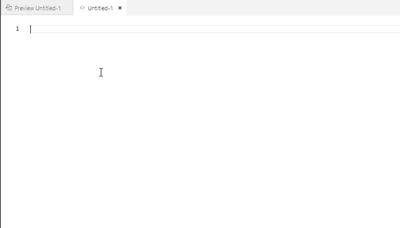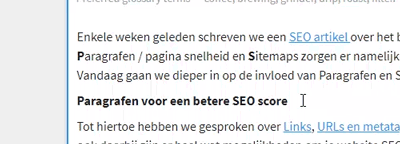By Blastic, 27 May 2019
How to easily improve your SEO ranking: paragraphs and sitemaps
Paragraphs for a better SEO score
So far we have talked about Links, URLs and meta tags of a specific page but not yet about the actual text on that page. For example, a long text is often divided into several paragraphs to optimize the experience. To optimize your SEO score, make sure to use titles and subtitles and use your keywords throughout titles and paragraph texts.

Search engines will find the keywords contained in your titles more important than the keywords contained in your 'plain' text. That's why it's so important to work with different title levels (H1, H2, H3, ...). However, do not exaggerate with these titles, because Google will penalize you if your texts become less readable as a result.

Page speed
Search engines reward pages with a fast loading time. Specifically, Google compares your page with that of the competition in your segment, for a specific country, device and network. Faster pages get a higher SEO score, slow pages lose points. Although you cannot influence all criteria of speed, there are certainly elements that you control:
-
Avoid large images: images that are too heavy will negatively influence the loading time of the page.
-
Go for a smart design: too many animations and special effects add weight to the page. Keep it simple!
-
Choose developers who efficiently build your website HTML and CSS to optimize speed.
Sitemaps & robot.txt
Finally, there is the topic of the sitemap. Before a page can appear in the search results, the search engine must first have mapped that page, read: know that it exists. Search engines such as Google and Bing do this by scanning the pages on your website ("crawling"). To make the work easier, you can submit a sitemap or index to the search engine with a list of all your pages. If you do not, Google will map your website by itself based on your internal links. The disadvantage is that you are not sure if and when all pages will be indexed.
Moreover, if you want to have control over which pages Google should focus on, you can do that by working with a "robot.txt" file. Here you provide "no-follow" links and "no-index" links. The first one ensures that Google does not follow your link, so this page has no SEO score. The latter ensures that Google does not include the page in the index. In this case the link still has an SEO value. This is useful, for example, with an admin page that you must log in to see the content. This does not have to be visible to Google, because only a limited number of people will be able to see the content of this, but it can certainly count in your SEO score.
At Blastic we provide all the tools to make sections SEO proof, we build efficiently loading pages, and we provide sitemaps and a robot.txt where necessary.
Looking for a SEO proof web application? Let's talk!